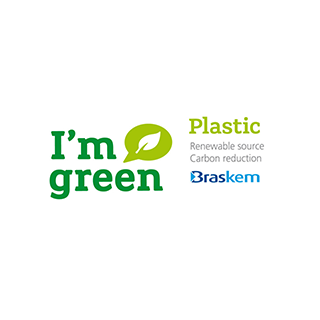Growth & Projections of the Green Chemicals Industry
At a global scale, the biobased chemicals market was valued at US$75.9 billion in 2021 and between $107.6 and $126.25 billion in 2022 with a growth projection of 8.8% annually between 2022 and 2030. Innovation in analytical tools and availability of data has made it easier for companies to develop and commercialize new products in this space as valuing waste streams has become more important across the globe.
Biobased Chemicals & the EPA’s 12 Principles of Green Chemistry
According to the US Department of Agriculture (USDA), a biobased chemical is “a chemical derived or synthesized in whole or in part from biological materials.” These chemicals are used as a sustainable alternative to fossil fuel-based chemicals due to their capacity to reduce greenhouse gas emissions and minimize chemical waste. Consumer’s preferences for plant-based ingredients are a leading cause of growth for the biobased and biochemical industry.

One of the key principles within the US Environmental Protection Agency (EPA) 12 Principles of Green Chemistry is the use of renewable feedstocks: Use starting materials (also known as feedstocks) that are renewable rather than depletable. The source of renewable feedstocks is often agricultural products (wheat, maize, beet, cane sugar, ryegrass, alfalfa grass, lignocellulosic crops and residues, palm and oilseed rape, algae, seaweed, and organic residues) or the wastes of other processes; the source of depletable feedstocks is often fossil fuels (petroleum, natural gas, or coal), or mining operations.
The EPA’s 12 Principles of Green Chemistry are rooted in the Pollution Prevention Act of 1990 which integrated the pollution-prevention hierarchy of reducing, recycling, treating, and disposing of source pollutants through cost effective changes in production, operation, and raw material use.
Green Chemistry is defined as aiming “to design and produce cost-competitive chemical products and processes that attain the highest level of the pollution-prevention hierarchy by reducing pollution at its source.” Source reduction focuses on reducing hazards to human health and the environment; it is any practice that decreases the amount of hazardous substances, pollutants, or contaminants entering a waste stream or entering the environment, including fugitive emissions, prior to recycling, treatment, or disposal. This can include modifications or reformulations of products as well as substitutions of raw materials.
Examples of biochemicals made through green chemistry practices include ethanol, lysine and citric acid, sorbitol, glycerol as well as fatty acids. The applications of green chemicals cover a wide range of industries such as adhesives and coatings, pharmaceuticals, cosmetics, and food products.
Green Chemical Market in the US & Canada
The emergence of the biochemicals industry in the US looks promising. The Green Chemicals market in the US was estimated at $33.8 billion in 2022. The contribution of this region to the industry can be reflected in the labor market as well. According to the US Bureau of Labor Statistics, biochemistry employment is forecasted to grow 4% between 2019 and 2026.
On the other hand, the US government has taken steps to boost the biochemical industry through legislation and the creation of programs. Introduced in the U.S. House of Representatives in April 2021, the Renewable Chemicals Act of 2021 (RCA) would provide a 15% per pound federal tax credit to manufacturers that produce biobased chemicals with at least 95% biobased content. Variations of the RCA have been adopted in various states (MN, KY, NE, IA). In addition, the Department of Agriculture’s Rural Business and Cooperative Service (RBSE) has launched the “Biorefinery, Renewable Chemical, and Biobased Product Manufacturing Assistance Program” (BAP or Section 9003 Program) which offers loan guarantees to assist in the development of manufacturing facilities for renewable chemicals, biobased chemical and biofuels producers.
Canada is working to become a global exporter of biochemicals by using their vast forest resources. This country is developing value-added “green” chemicals through their Bio-Pathways Project which started in 2009 and has grown significantly. One of the goals of the project is to develop a biorefinery where traditional products as well as renewable fuels, plastics, and chemicals for the pharmaceutical and food industries are generated. In Canada, the Green Chemicals market is forecast to grow 7% between 2020 and 2027.
Growth of Green Chemicals Industry in Europe

A recent study by the Joint Research Centre (JRC), the European Commission’s science and knowledge service, predicts an annual growth of 3.6% for the biobased chemicals market between 2018 and 2025. Researchers based the study on 10 product categories (platform chemical molecules, solvents, polymers for plastics, paints, surfactants, cosmetics, adhesives, lubricants, plasticisers, synthetic fibers) that involve the biobased chemicals market, in which the industries of cosmetics, surfactants and adhesives are expected to have higher growth in this region.
According to the JRC publication, biobased chemicals are produced in the EU at a rate of 4.7 Mt/year (metric tonne per year) which represents 3% of the global market for these categories listed. Germany, a stand out market in Europe, is expected to reach an annual growth rate of 7.6% between 2022 and 2030.
Asia – The Leading Biochemicals Market
One analysis positions the Asia Pacific region as the leader in the biochemicals market from 2022-2030 with a $148.6 billion market size in 2030. Within Asia, China has the highest current and projected growth in the biobased chemicals market. China, the world’s second largest economy after the US, is projected to reach a market size of $42.2 billion in 2030, achieving an annual growth rate of 9.2% between 2022 and 2030.
Another growing market in Asia is Japan, which is forecasted to grow 9% over the 2022-2030 period. Consumer trends toward more eco-friendly products and the rapidly expanding biodiesel industry throughout Asia are projected to bring promising growth opportunities for the Indian biochemical market, specifically.
Brazil Leads Latin America‘s Green Chemicals Industry

Latin America has the lowest compound annual growth rate (CAGR) in the green chemicals industry compared to the aforementioned regions but is expected to see a significant increase in valuation over the next few years as major end-use industries demand more biobased chemicals. The leading contributor to the biobased chemical industry in Latin America is Brazil, followed by Mexico.
The majority of biochemical initiatives in the Latin American region are driven by government actions to promote the use of biodegradable plastic bags by banning petroleum-based plastic grocery bags. As governments are integrating more environmentally conscious legislation, such as Belize’s Department of Environment introducing a national standard for biodegradable product specifications and labeling which came into effect on August 1, 2021, further use of biobased chemicals in packaging is encouraged. Regarding standard and eco-label generation, Braskem, headquartered in Sao Paulo Brazil, is a leading thermoplastic resin provider in the region and has their own Braskem I’m Green biobased label. Rising prices for raw materials in petroleum-based chemicals, government reforms, and consumer awareness contribute to a growing green chemicals market in Latin America and globally.
References:
- 2020. An Economic Impact Analysis of the U.S. Biobased Products Industry: 2019 update. Daystar, J., Handfeld, R.B., Pascual-Gonzalez, J., McConnell, E. and J.S. Golden (2020). (Accessed August 2021).
- 2023. Green Chemistry. US EPA.
- 2022. Summary of the Pollution Prevention Act. US EPA.
- 2023. Green Chemicals – Global Market Trajectory & Analytics. Global Industry Analysts, Inc.
- 2023. Green Chemicals Market. Vantage Market Research & Consultancy Services.
- 2021. Bio-Based Chemicals Market Trends and Forecast, A Comprehensive Overview in 2023-2031. Market Watch.
- 2020. Global Bio-Based Chemicals Market Size By Type, By Application, By Geographic Scope And Forecast. Verified Market Research. (Accessed August 2021).
- 2021. H.R.2532 – Renewable Chemicals Act of 2021. US Congress (2021-2022).
- 2021. U.S. Department of Labor, Occupational Outlook Handbook, Biochemists and Biophysicists. US Bureau of Labor Statistics. (Accessed August 2021).
- 2020. Forest bioeconomy, bioenergy and bioproducts. Natural Resources Canada. (Accessed August 2021).
- 2021. Bio-Pathways Project. Natural Resources Canada.
- 2019. Insights into the European market for bio-based chemicals, EUR 29581 EN, Publications Office of the European Union. Spekreijse, J., Lammens, T., Parisi, C., Ronzon, T. and Vis, M. (Accessed August 2021).
- 2022. Biochemical Market- Global Industry Analysis, Size, Share, Growth, Trends, Regional Outlook, and Forecast 2022-2030. Precedence Research.
- 2023. Bio-based Platform Chemicals Market Segmented by Product Type, Regional analysis. Market Data Forecast.
- 2019. Latin America Biobased Chemicals Market 2019-2028. Triton Market Research.

Join our mailing list to receive news of upcoming webinars by Beta and its subsidiaries as well as other industry updates.
This entry was posted on Wednesday, May 3rd, 2023 and is filed under Biobased Products .